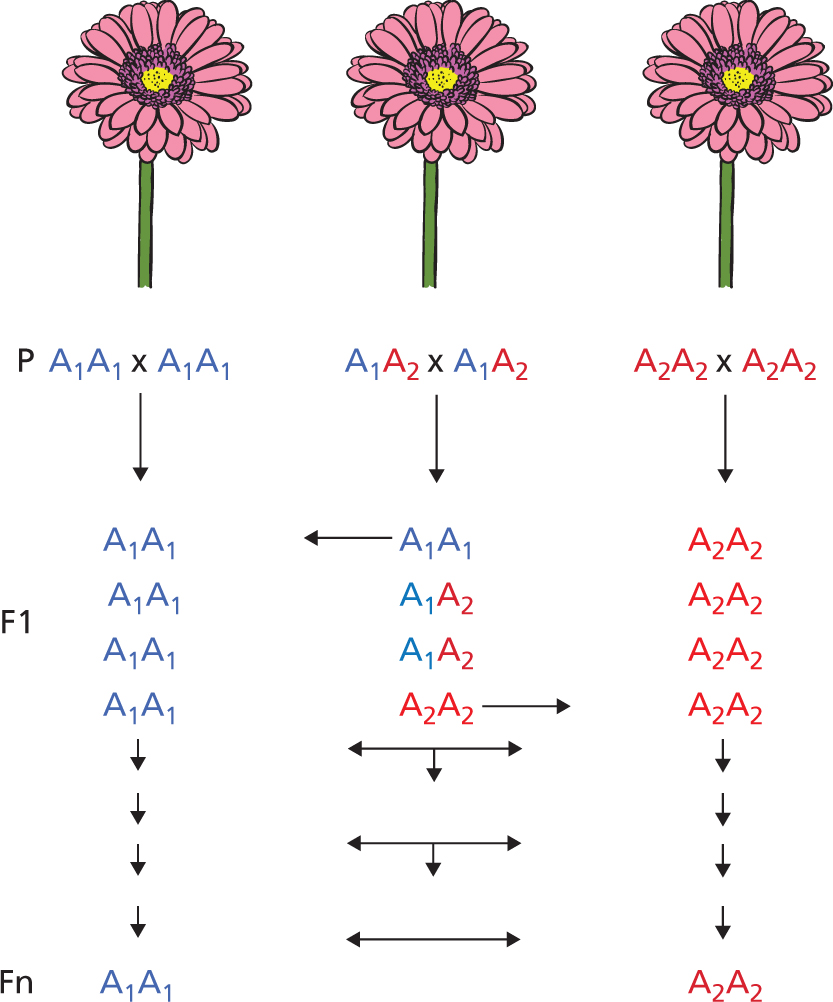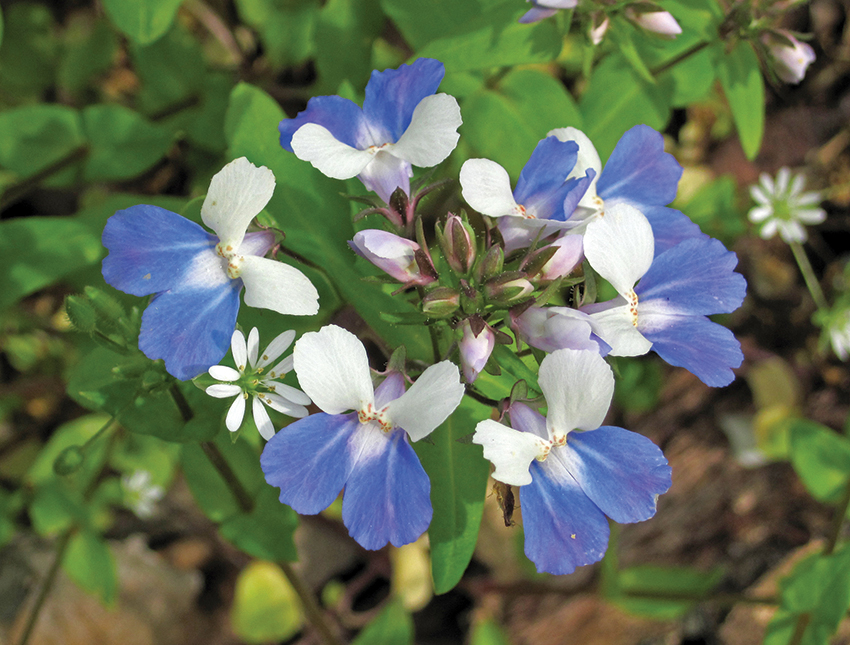

Loss of
heterozygosity due to inbreeding
In common parlance, "inbreeding"
means mating of close relatives, for example first-cousin
marriages. Inbreeding in the population genetic
sense occurs when related individuals mate with each other at
higher than expected proportions. Because all
populations are finite, all individuals are related to a
greater or lesser extent: inbreeding necessarily occurs at a
higher rate in small populations than in larger.
Particular mating systems may
also produce extreme inbreeding. In a population of self-pollinating
plants segregating for two alleles A1
& A2, homozygotes of
either type [above, left] will therefore produce only homozygous
offspring. Any self-pollinating heterozygous plants [middle]
produce offspring in the expected 1:2:1 ratio. The
homozygous offspring of either type are absorbed into the
corresponding homozygous lines. The heterozygous offspring
remain available for self-pollination in the next
generation. Each successive generation losses one-half the
proportion of heterozygous, and eventually converges on a
population that comprises two homozygous lines. If f(A1)
= p and f(A2) = q, Hexp
= 2pq but Hobs = 0.0.
The example shown is Blue-Eyed
Mary (Collinsia verna), a facultative
out-crosser that switches to obligate
self-pollination when insect pollinators are scarce.